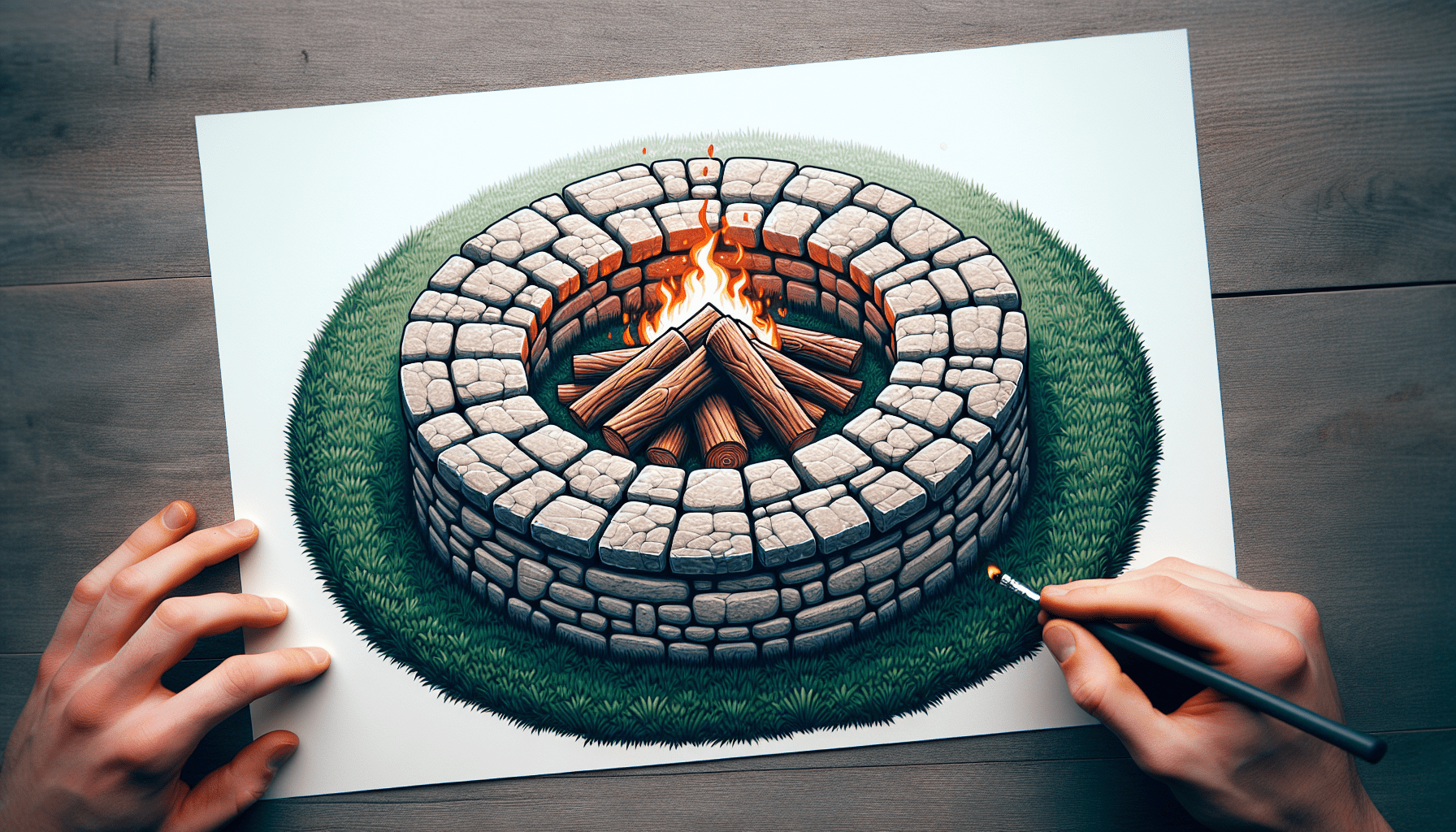Have you ever dreamt of gathering around a warm fire in your own backyard, roasting marshmallows or simply basking in the glow during chilly evenings? Building a DIY fire pit is an exciting project that can transform your outdoor space into a cozy retreat. Whether you’re a seasoned DIYer or a beginner, this guide will walk you through the process step-by-step. By the end, you’ll be ready to fire up your new pit with confidence and pride.

Materials and Tools You’ll Need
Before diving into the construction process, it’s important to gather all the necessary materials and tools. This not only ensures a smooth workflow but also prevents frequent trips to the hardware store.
Materials
The Basics:
- Firebricks: Special bricks designed to withstand high temperatures.
- Gravel: For the base.
- Sand: A layer atop the gravel.
- Concrete Pavers or Stones: For the outer ring.
- Mortar: To bind the materials together.
Additional:
- Metal fire pit ring (optional but highly recommended for better durability).
- Adhesive: Heat-resistant kind.
- Landscape fabric: To prevent weeds.
Tools
- Shovel
- Wheelbarrow
- Level
- Tape measure
- Trowel
- Rubber mallet
- Gloves
- Safety glasses
Planning Your Fire Pit
Choosing the Location
Finding the perfect spot is essential to ensuring safety and functionality. You should place your fire pit at least 10 feet away from any structures, trees, or overhanging branches. Look for a level area that doesn’t collect standing water. Consider wind direction to avoid smoke blowing into your home or leisure areas.
Deciding on the Size and Shape
The classic fire pit is generally circular, but square designs can be equally attractive and functional. A common dimension for a fire pit is between 36 to 44 inches in diameter. This size offers enough space for a roaring fire but still keeps people close enough to chat comfortably.

Step-By-Step Guide to Building Your Fire Pit
Step 1: Mark the Area
Use your tape measure to mark the center of your fire pit’s location. For a circular pit, tie a string to a center stake and attach the other end of the string to a can of spray paint. Walk in a circle around the stake while spraying the ground to outline your pit.
Step 2: Dig the Pit
Armed with your shovel and wheelbarrow, begin digging out the marked area to a depth of approximately 6-12 inches. This base will add stability and help contain the fire. Remove all grass, roots, and debris to ensure a clean foundation.
Step 3: Add Gravel and Sand
Fill the pit with a layer of gravel about 4 inches deep. Compact it down to create a stable and level base. On top of the gravel, add a 2-inch layer of sand and level it out. Both layers enhance drainage and provide a firm flooring for your fire pit.
Step 4: Construct the Outer Wall
Using your chosen concrete pavers or stones, start to build the outer wall of your fire pit. Place the first layer directly onto the layer of sand, ensuring each piece fits snugly. Use a level to make sure everything is even. Continue stacking the pavers or stones, applying mortar or adhesive between each layer until you reach your desired height – commonly about 12 to 18 inches.
Step 5: Insert the Fire Ring
If you’ve opted for a metal fire ring, place it inside the constructed wall. Ensure it fits snugly and provides extra protection to your pavers or stones from direct contact with flames, thus extending their longevity.
Step 6: Fill in the Center
Fill the center of the pit with additional sand and spread it out evenly. This layer of sand will act as the bed for your firewood, making it easier to clean ash out and keep your pit in good shape.
Safety Tips for Using Your Fire Pit
Fire pits bring a lot of joy but also come with responsibilities. Here are some safety tips to keep in mind:
Keep a Safe Distance
Always maintain a safe distance from buildings, furniture, and other flammable materials. Ten feet is a good general rule, but check local fire regulations in your area.
Never Leave a Fire Unattended
One of the golden rules of fire safety. Never walk away from a roaring fire pit; always have someone watching it.
Have a Fire Extinguisher Handy
Equip your outdoor space with a fire extinguisher, a bucket of sand, or a water source nearby. It’s always better to be prepared.
Use the Right Wood
Avoid using softwoods like pine which can pop and throw sparks. Opt for seasoned hardwoods to minimize smoke and ash.
Extinguish Properly
When you’re done enjoying your fire pit, ensure the flames are completely out before heading indoors. Spread out the logs or coals, dousing them thoroughly with water or covering them with sand.
Enhancements and Extras
You’ve got the basics down, but why stop there? Here are some creative ideas to make your fire pit a standout feature in your backyard.
Seating Arrangements
Consider placing comfortable and stylish seating around your fire pit. Adirondack chairs or built-in stone benches make great options that add both functionality and style.
Lighting
Add ambiance with string lights or lanterns. Solar-powered options are both eco-friendly and hassle-free.
Cooking Features
Interested in taking your backyard experience up a notch? Consider adding a grill grate or a rotisserie attachment for some delicious outdoor cooked meals.
Decorative Elements
Spruce up the area around your fire pit with decorative stones, potted plants, or a small garden. It’s these little touches that make your outdoor space uniquely yours.
Pergola or Shade
If your fire pit will be used often during the day, a pergola or some form of shading can make things more comfortable. Just ensure it’s high enough and made of non-flammable materials to stay safe.
Troubleshooting Common Issues
Uneven Ground
If your ground is uneven, you might face some challenges. You can level it up by adding or removing sand and gravel until it’s properly balanced.
Stubborn Pavers
If a paver doesn’t fit snugly, don’t force it. Instead, re-adjust the surrounding pieces and use smaller stones for better fitting.
Smoke Management
If your fire pit is generating too much smoke, it might be the wood you’re using. Ensure it’s dry, seasoned hardwood. Green or wet wood produces excessive smoke.
Cracks in Firebricks
Over time, firebricks might develop cracks due to exposure to extreme heat. Keep an eye on the condition of your firebricks and replace them as necessary to maintain safety.
Conclusion
Building a DIY fire pit is an effective way to enhance your backyard, creating a cozy gathering spot for friends and family. The process, from planning the location to the final construction, is straightforward enough for beginners but also engaging for seasoned DIYers. By following these steps and keeping safety in mind, you can create a beautiful and functional fire pit that will become the heart of your outdoor activities. Enjoy your newfound haven, surrounded by the warmth and charm that only a fire can provide.

